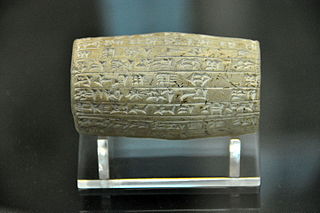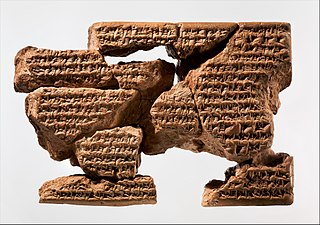Births
This section is empty.You can help by adding to it.(August 2013) |
| Millennium: | 1st millennium BC |
|---|---|
| Centuries: | |
| Decades: | |
| Years: |
| 626 BC by topic |
| Politics |
|---|
| Categories |
| Gregorian calendar | 626 BC DCXXV BC |
| Ab urbe condita | 128 |
| Ancient Egypt era | XXVI dynasty, 39 |
| - Pharaoh | Psamtik I, 39 |
| Ancient Greek era | 38th Olympiad, year 3 |
| Assyrian calendar | 4125 |
| Balinese saka calendar | N/A |
| Bengali calendar | −1218 |
| Berber calendar | 325 |
| Buddhist calendar | −81 |
| Burmese calendar | −1263 |
| Byzantine calendar | 4883–4884 |
| Chinese calendar | 甲午年 (Wood Horse) 2071 or 2011 — to — 乙未年 (Wood Goat) 2072 or 2012 |
| Coptic calendar | −909 – −908 |
| Discordian calendar | 541 |
| Ethiopian calendar | −633 – −632 |
| Hebrew calendar | 3135–3136 |
| Hindu calendars | |
| - Vikram Samvat | −569 – −568 |
| - Shaka Samvat | N/A |
| - Kali Yuga | 2475–2476 |
| Holocene calendar | 9375 |
| Iranian calendar | 1247 BP – 1246 BP |
| Islamic calendar | 1285 BH – 1284 BH |
| Javanese calendar | N/A |
| Julian calendar | N/A |
| Korean calendar | 1708 |
| Minguo calendar | 2537 before ROC 民前2537年 |
| Nanakshahi calendar | −2093 |
| Thai solar calendar | −83 – −82 |
| Tibetan calendar | 阳木马年 (male Wood-Horse) −499 or −880 or −1652 — to — 阴木羊年 (female Wood-Goat) −498 or −879 or −1651 |
The year 626 BC was a year of the pre-Julian Roman calendar. In the Roman Empire, it was known as year 128 Ab urbe condita . The denomination 626 BC for this year has been used since the early medieval period, when the Anno Domini calendar era became the prevalent method in Europe for naming years.
This section is empty.You can help by adding to it.(August 2013) |
The 6th century BC started the first day of 600 BC and ended the last day of 501 BC.
The 7th century BC began the first day of 700 BC and ended the last day of 601 BC.
This article concerns the period 619 BC – 610 BC.
The year 560 BC was a year of the pre-Julian Roman calendar. In the Roman Empire, it was known as year 194 Ab urbe condita. The denomination 560 BC for this year has been used since the early medieval period, when the Anno Domini calendar era became the prevalent method in Europe for naming years.
The year 516 BC was a year of the pre-Julian Roman calendar. In the Roman Empire, it was known as year 238 Ab urbe condita. The denomination 516 BC for this year has been used since the early medieval period, when the Anno Domini calendar era became the prevalent method in Europe for naming years.
The year 545 BC was a year of the pre-Julian Roman calendar. In the Roman Empire, it was known as year 209 Ab urbe condita. The denomination 545 BC for this year has been used since the early medieval period, when the Anno Domini calendar era became the prevalent method in Europe for naming years.
The year 539 BC was a year of the pre-Julian Roman calendar. In the Roman Empire, it was known as year 215 Ab urbe condita. The denomination 539 BC for this year has been used since the early medieval period, when the Anno Domini calendar era became the prevalent method in Europe for naming years.
Babylonian may refer to:
Nabû-nāṣir, inscribed in cuneiform as dAG-PAB or dAG-ŠEŠ-ir, Greek: Ναβονάσσαρος, whence "Nabonassar", and meaning "Nabû (is) protector", was the king of Babylon 747–734 BC. He deposed a foreign Chaldean usurper named Nabu-shuma-ishkun, bringing native rule back to Babylon after 23 years of Chaldean rule. His reign saw the beginning of a new era characterized by the systematic maintenance of chronologically precise historical records. Both the Babylonian Chronicle and the Ptolemaic Canon begin with his accession to the throne. He was contemporary with the Assyrian kings Aššur-nirarī V and Tiglath-Pileser III, the latter under whom he became a vassal, and the Elamite kings Humban-Tahrah I and Humban-Nikaš I.
The year 612 BC was a year of the pre-Julian Roman calendar. In the Roman Empire, it was known as year 142 Ab urbe condita. The denomination 612 BC for this year has been used since the early medieval period, when the Anno Domini calendar era became the prevalent method in Europe for naming years.
The year 609 BC was a year of the pre-Julian Roman calendar. In the Roman Empire, it was known as year 145 Ab urbe condita. The denomination 609 BC for this year has been used since the early medieval period, when the Anno Domini calendar era became the prevalent method in Europe for naming years.
The year 597 BC was a year of the pre-Julian Roman calendar. In the Roman Empire, it was known as year 157 Ab urbe condita. The denomination 597 BC for this year has been used since the early medieval period, when the Anno Domini calendar era became the prevalent method in Europe for naming years.

Nabopolassar (; cuneiform: 𒀭𒀝𒌉𒍑𒌶dAG.IBILA.URU3Akkadian: Nabû-apla-uṣur; c. 658 BC – 605 BC) was a Chaldean king of Babylonia and a central figure in the fall of the Neo-Assyrian Empire. The death of Assyrian king Ashurbanipal in 631 BC resulted in political instability. In 626 BC, a native dynasty arose under Nabopolassar. He made Babylon his capital and ruled over Babylonia for a period of about twenty years (626–605 BC). He is credited with founding the Neo-Babylonian Empire. By 616 BC, Nabopolassar had united the entire area under his rule.
The year 605 BC was a year of the pre-Julian Roman calendar. In the Roman Empire, it was known as year 149 Ab urbe condita. The denomination 605 BC for this year has been used since the early medieval period, when the Anno Domini calendar era became the prevalent method in Europe for naming years.
The year 627 BC was a year of the pre-Julian Roman calendar. In the Roman Empire, it was known as year 127 Ab urbe condita. The denomination 627 BC for this year has been used since the early medieval period, when the Anno Domini calendar era became the prevalent method in Europe for naming years.

Sinsharishkun or Sin-shar-ishkun was the penultimate king of Assyria, reigning from the death of his brother and predecessor Ashur-etil-ilani in 627 BC to his own death at the Fall of Nineveh in 612 BC.
The year 614 BC was a year of the pre-Julian Roman calendar. In the Roman Empire, it was known as year 140 Ab urbe condita. The denomination 614 BC for this year has been used since the early medieval period, when the Anno Domini calendar era became the prevalent method in Europe for naming years.

The Neo-Babylonian Empire, also known as the Second Babylonian Empire and historically known as the Chaldean Empire, was the last of the great Mesopotamian empires to be ruled by monarchs native to Mesopotamia. Beginning with Nabopolassar's coronation as King of Babylon in 626 BC and being firmly established through the fall of the Neo-Assyrian Empire in 612 BC, the Neo-Babylonian Empire would be short-lived, being conquered after less than a century by the Persian Achaemenid Empire in 539 BC.

The Revolt of Babylon in 626 BC refers to the revolt of the general Nabopolassar and his war of independence until he successfully consolidated control of Babylonia in 620 BC, defeating the Neo-Assyrian Empire which had ruled Babylonia for more than a century. The revolt saw the formation of the Neo-Babylonian Empire and was one of the key factors contributing to the fall of Assyria; twenty years after the revolt had begun, Napopolassar's army and that of his ally, Cyaxares of the Medes, had destroyed the Neo-Assyrian Empire.
Ashur-uballit II, also spelled Assur-uballit II and Ashuruballit II, was the final king of Assyria, ruling from his predecessor Sinsharishkun's death at the Fall of Nineveh in 612 BC to his own defeat at Harran in 609 BC. He was possibly the son of Sinsharishkun and likely the same person as a crown prince mentioned in inscriptions at the Assyrian capital of Nineveh in 626 and 623 BC.
| This BC year article is a stub. You can help Wikipedia by expanding it. |